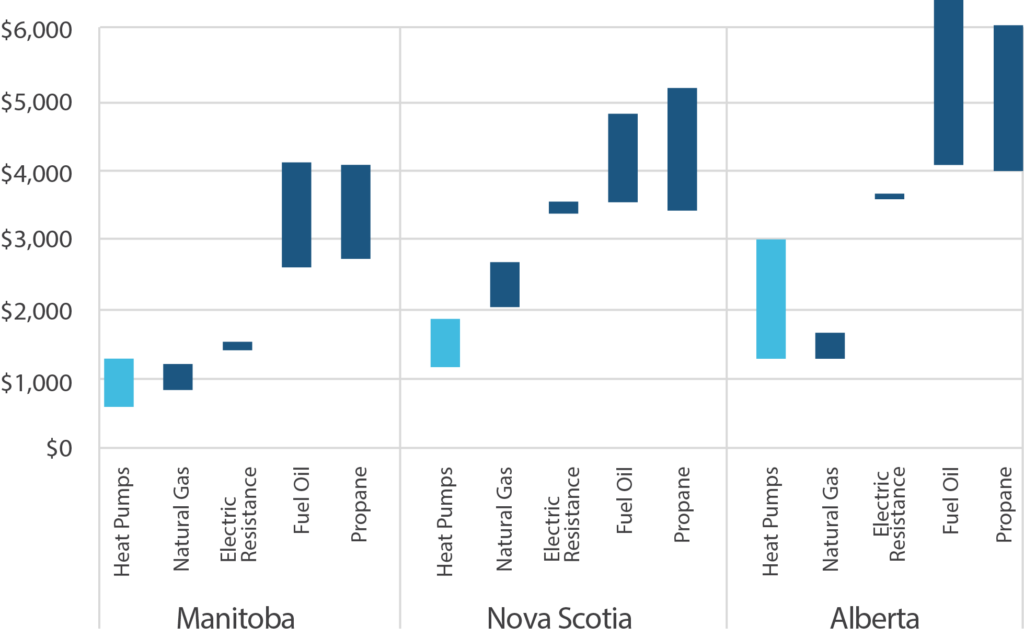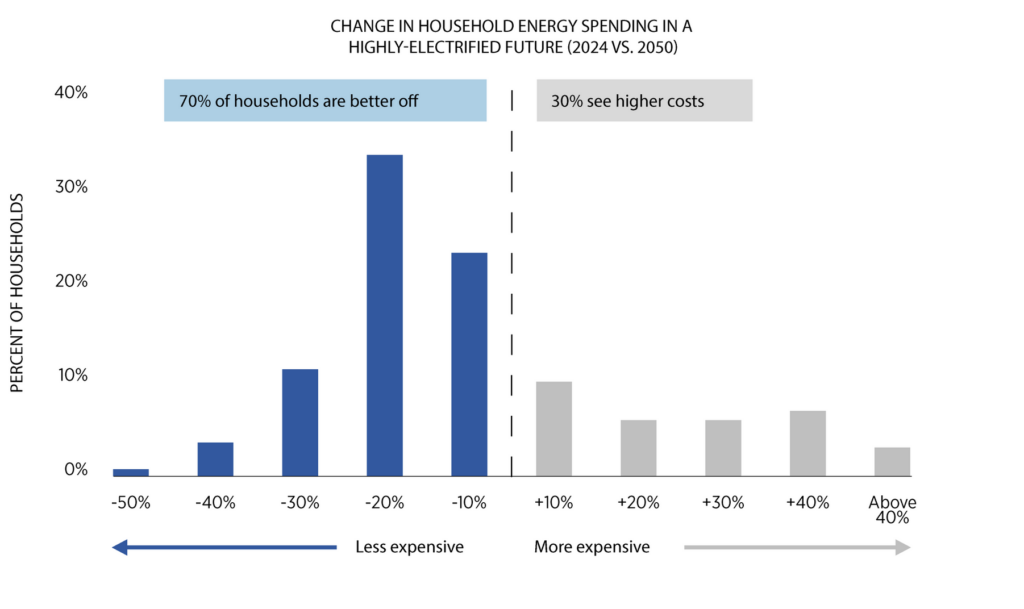The release of the Canada Green Buildings Strategy (CGBS) is a much-needed step along the pathway to net zero for Canada’s building sector. Buildings directly account for around 13% of our annual greenhouse gas emissions, and as our Pace of Progress report showed earlier this year, change is happening far too slowly to meet our 2030 and 2050 emissions targets. The status quo is clearly not working, and strategies like the CGBS are essential to getting the sector on track.

Heat pump sales in the next three years will need to more than double current projections to meet Canada's climate goals.
Source: The Pace of Progress (BDA)
Reaching our decarbonization goals can’t come at the cost of energy affordability, and strong market signals are critical to an efficient and effective transition. We are glad to see the continued emergence of these signals, with:
- the inclusion of actions to phase out home heating oil in new construction (where the economic case for electrification is already unambiguous),
- the commitment to work towards replacing new air conditioner sales with heat pumps—a policy we explored in last year’s Cool Way to Heat Homes report that would unlock billions of dollars in net savings while significantly reducing emissions from building heating,
- a much-needed modernization of the Energy Efficiency Act, originally adopted in 1992, to provide better tools for driving meaningful decarbonization, and
- the continued commitment to decarbonizing federal investments in public infrastructure assets to prime the market.
These are clear, achievable policies that make good economic sense, and will create valuable momentum towards Canada’s decarbonization goals.

Fuel oil is consistently among the most expensive fuel sources across Canada in terms of annual operating costs, but the economic case for switching away from natural gas can be more ambiguous.
Source: The Case for Building Electrification in Canada (BDA)
The next step will be developing the strategic tools to encourage emissions reductions where the economics are more complex. As the analysis from the Transition Accelerator in the final report from the Canada Electricity Advisory Council shows, while 70% of Canadian households will see reduced overall energy costs in a highly electrified future, those savings aren’t always evenly distributed. Some jurisdictions (particularly provinces that rely on low-cost but GHG-emitting natural gas for home heating) will see their overall energy costs increase. Managing these impacts and maintaining affordability will be essential to a successful net-zero transition.

While the majority of Canadian households will spend less on energy in a highly electrified future, nearly a third will see some increase in net energy costs over the transition.
Source: Powering Canada: A blueprint for success (Canada Electricity Advisory Council)
This is far from simple, and it calls for a collaborative approach: Canada’s local and provincial governments need to work alongside the federal government to promote policies that send clear market signals without impacting affordability. There is much work to be done, but if we hope to reach our 2050 targets for the building sector, the time to act is now.
The Canada Green Buildings Strategy is a strong step in the right direction. We look forward to building on the momentum it creates.
